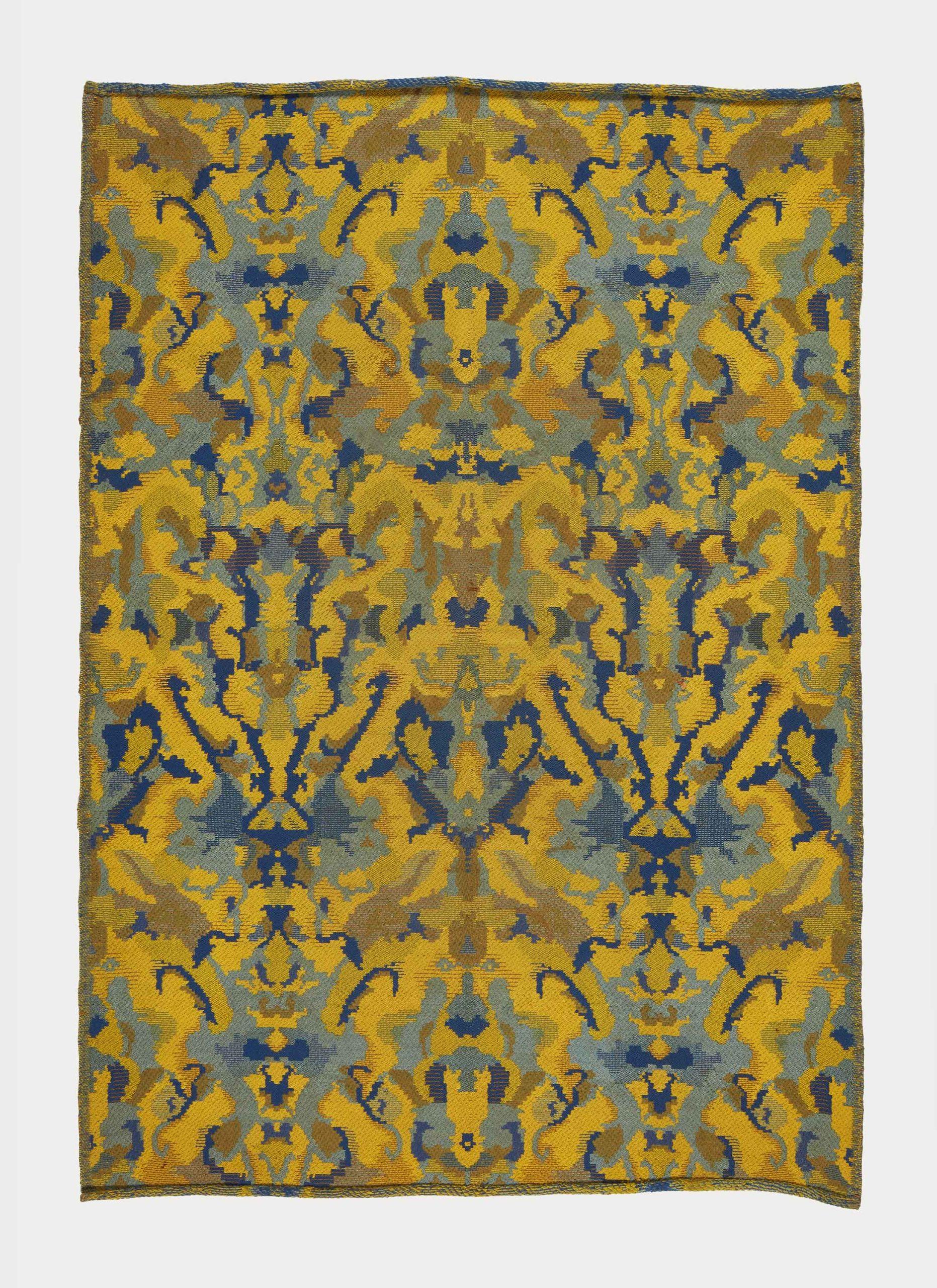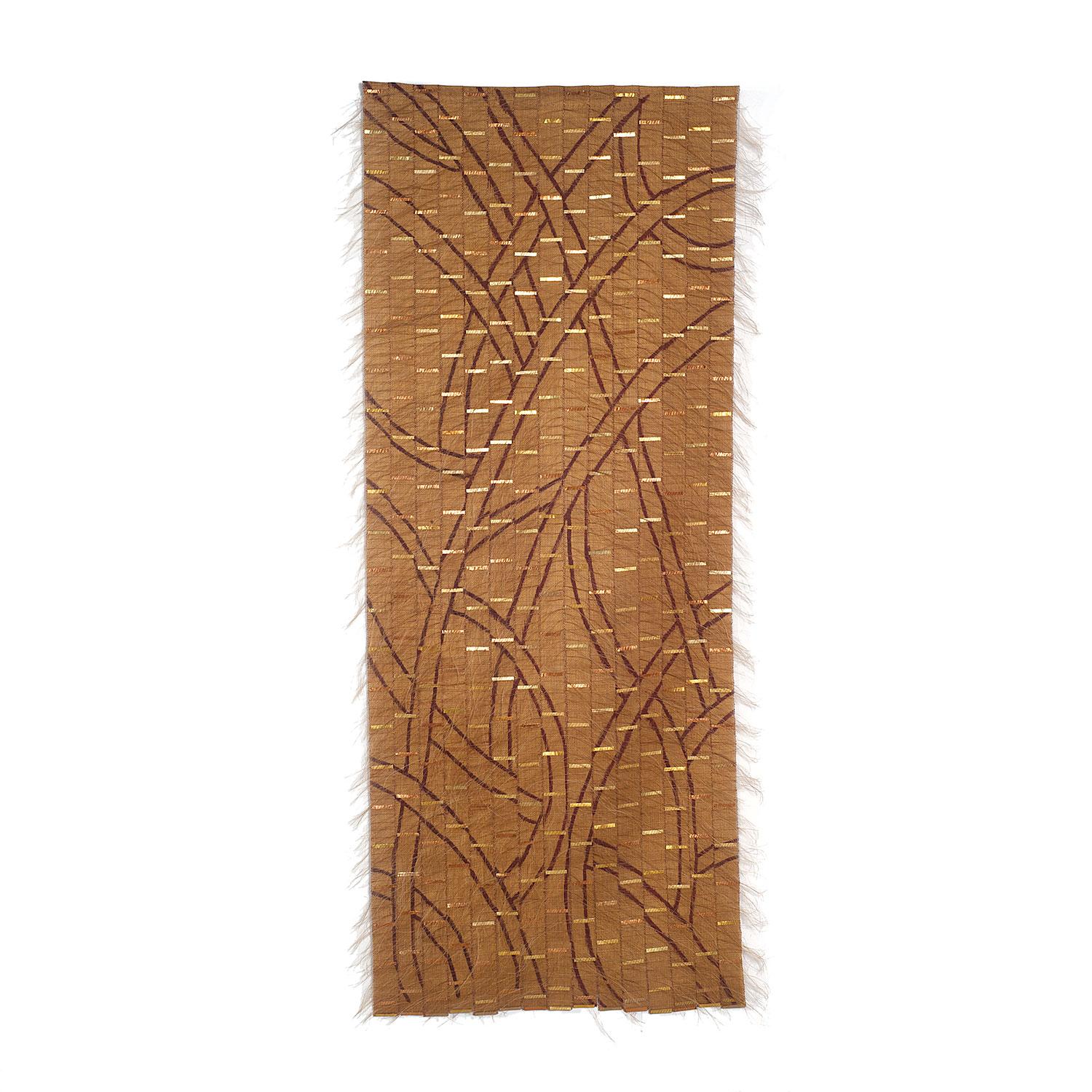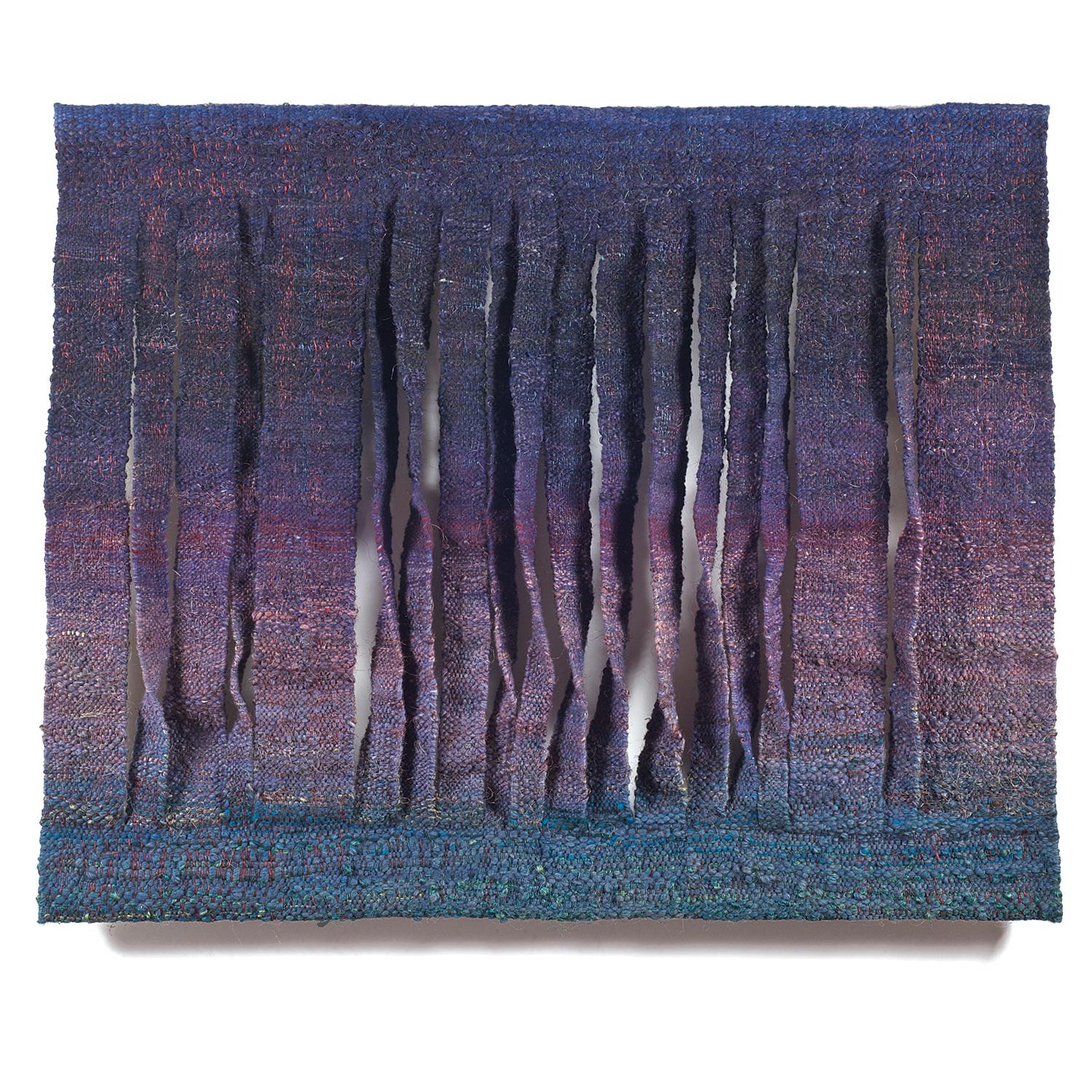Items Similar to Embroidery (1920s textile work) by Herta Ottolenghi Wedekind
Want more images or videos?
Request additional images or videos from the seller
1 of 5
Herta Ottolenghi WedekindEmbroidery (1920s textile work) by Herta Ottolenghi Wedekind1920 - 1930 c.
1920 - 1930 c.
About the Item
Artist: Herta Ottolenghi Wedekind
Title: Embroidery
Bibliography: Herta Ottolenghi Wedekind. The dream of the total artwork, exhibition catalogue edited by G. Gomiero, E. Lago, S. Spinazzè (Rovereto, Mart, 17 December 2021 - 13 February 2022), Milan, Scalpendi, 2021, p. 101.
Provenance: heirs of the artist
Herta Ottolenghi Wedekind (Berlin 1885 – Acqui 1953) was an enlightened patron and one of the main protagonists of the extraordinary season of decorative arts in the 1920s and 1930s.
Pupil of the German artist Hans Stoltenberg – Lerche, with whom she studied in Rome between 1910 and 1912, she debuted in the field of sculpture. Around 1920 she perfected an innovative system, for the creation of drawings for works of applied art based on the symmetrical duplication of abstract motifs obtained through random traces of ink, in a way that has points of contact with the contemporary “Rorschach spots” used in psychodiagnostics. These forms are used in the decoration of tapestries, carpets, cushions, screens, fabrics for furniture, both woven and hand-embroidered, with which the artist would triumph in major exhibitions of decorative arts of those years.
On 24 January 1922, in Turin, Herta patented the process she had developed, which was essentially based on kleksographs produced on squared paper, so that they could be easily transferred onto fabrics and textiles. In the same year, he took part in his first exhibition, the German Fair of Munich (Deutsche Gewerbeschau München) with his hand-embroidered carpets, cushions and chairs.
In 1923, he took part in his first Italian exhibition, the 1st International Exhibition of Decorative Arts in Monza. He had his own room on the first piano nobile where he presented tapestries, blankets, carpets, screens, chairs and fabrics. He won a gold and a silver medal and two of the tapestries exhibited were bought by the City of Milan. His creativity in the field of applied arts immediately attracted the attention and praise of Guido Marangoni, president of the Monza exhibition, who reviewed his fabrics in several articles. This was followed by his appearances at all the Monza exhibitions until 1930.
Over the years, several of his works entered the most important collections in the world, including the Victoria & Albert Museum in London and the Metropolitan Museum in New York.
To underline also the role played in the fashion circuit: in Monza, in 1925, she obtained the gold medal for the XXI class, dedicated to fashion and clothing accessories.
- Creator:Herta Ottolenghi Wedekind (1885 - 1953, German)
- Creation Year:1920 - 1930 c.
- Dimensions:Height: 74.02 in (188 cm)Width: 89.77 in (228 cm)
- Medium:
- Movement & Style:
- Period:
- Condition:
- Gallery Location:Roma, IT
- Reference Number:1stDibs: LU1926210373462
About the Seller
No Reviews Yet
Vetted Seller
These experienced sellers undergo a comprehensive evaluation by our team of in-house experts.
Established in 1973
1stDibs seller since 2022
- ShippingRetrieving quote...Ships From: Roma, Italy
- Return PolicyThis item cannot be returned.
More From This SellerView All
- Tapestry (1920s textile work) by Herta Ottolenghi WedekindBy Herta Ottolenghi WedekindLocated in Roma, RMArtist: Herta Ottolenghi Wedekind Title: Embroidery Bibliography: Herta Ottolenghi Wedekind. The dream of the total artwork, exhibition catalogue edited by G. Gomiero, E. Lago, ...Category
1920s Abstract Mixed Media
MaterialsFabric, Tapestry, Textile
- The Loggia of the Doge's Palace in VeniceLocated in Roma, RMArtist: Luigi Querena Medium: oil on canvas Signed lower right: “Luigi Querena 1858” Luigi Querena was born in Venice in 1824. He is one of the greatest representatives of 19th cent...Category
1850s Italian School Interior Paintings
MaterialsCanvas, Oil
- Girl with hydrangeaLocated in Roma, RMArtist: Raoul Viviani Medium: oil on canvas Signature: signed lower left “R. Viviani" Raul Viviani (Florence, 1883 - Rapallo, 1965) moved with his family...Category
20th Century Portrait Paintings
MaterialsCanvas, Oil
- Portrait of Vincenzo BelliniLocated in Roma, RMArtist: Giuseppe Cammarano Medium: oil on canvas Signature: Signed and dated lower right: “Gius. Cammarano f. 1819” Provenance: Naples, private collection Bibliography: G. Brevetti,...Category
1810s Romantic Portrait Paintings
MaterialsCanvas, Oil
- Marmore FallsLocated in Roma, RMsigned and dated lower right 'A. Calcagnadoro 1902'. In this majestic view of the Marmore Falls (Umbria), dated 1902, Calcagnadoro exhibits a naturalism full of symbolic evocations, in which the water element is the protagonist of the view. The place, visited by many artists and writers during the grand tour of Italy, is perfectly rendered in its wild and bursting dimension. Son of art (his father Cesare Calcagnadoro was an appreciated decorator), the artist from Rieti worked for a long time in the field of decorative art, achieving his most important successes with monumental paintings for architectural environments (Rieti, Sala Consiliare; Ligurian Pavilion at the Ethnographic Exhibition of 1911; Salone dei Ministri in the Palace of the Ministry of Education). The fame he achieved through this type of activity led him to obtain first a chair at the "Scuola preparatoria alle arti ornamentali" (preparatory school for the ornamental arts) of the municipality of Rome, then at the Institute of Fine Arts, where he was in close contact with Adolfo De Carolis. In parallel with his work as a decorator, Calcagnadoro devoted himself with enthusiasm and greater creative freedom to easel painting, constantly presenting the results of his research at national exhibitions. After his initial attempts to explore the themes of antiquity, in the early years of the 20th century the painter turned to the 'humanitarian socialism' of Duilio Cambellotti, Giacomo Balla, Giovanni Prini and Domenico Baccarini. His socially themed works convinced critics and institutions alike, as evidenced by the gold medal he was awarded for his painting The Unemployed, a dramatic painting of denunciation exhibited at the Florence Promotrice in 1904. Perhaps in deliberate opposition to the rhetorical language of architectural friezes...Category
Early 1900s Realist Landscape Paintings
MaterialsCanvas, Oil
- Shepherdesses from LombardyLocated in Roma, RMArtist: Raffaele Armenise oil on canvas, 102 x 74 cm signed lower left "R. Armenise" Exhibition: Promotrice di Belle Arti in Genoa 1907, p. 30, n 244 Influenced by the realism of th...Category
19th Century Italian School Figurative Paintings
MaterialsCanvas, Oil
You May Also Like
- Palisades, Contemporary Abstract Textile Wall Sculpture, Woven TapestryLocated in Wilton, CTPalisades, wool and sisal, 55" x 70", 1992. Contemporary Abstract Textile Wall Sculpture, Woven Tapestry. Anna Urbanowicz-Krowacka (b 1938, Poland) gra...Category
1990s Abstract Abstract Sculptures
MaterialsFabric, Textile, Tapestry, Wool, Thread
- Landscape Transformed, Contemporary Abstract Tapestry, Textile Wall SculptureBy Adela AkersLocated in Wilton, CTAdela Akers (b. 1933, Santiago de Compostela, Spain) is a Spanish-born textile and fiber artist. She is Professor Emeritus (1972 to 1995) at the Tyler Scho...Category
2010s Abstract Abstract Sculptures
MaterialsMetal, Foil
- Modern Needlepoint Textile Tapestry of the Parable of Daniel in the Lions' DenLocated in Houston, TXModern needlepoint textile tapestry of the Biblical parable of Daniel in the lions' den by Houston artist Robert Lunny. The work features Darius and his a...Category
1960s Abstract Mixed Media
MaterialsTapestry, Textile
- DominatrixBy Sal SalandraLocated in New York, NYSal Salandra of East Hampton, NY, has become renowned for his kinky thread paintings on needlepoint backing portraying homoerotic S&M scenes. This piece i...Category
21st Century and Contemporary Outsider Art Mixed Media
MaterialsTextile, Tapestry, Wool, Thread, Yarn
- Lucifer's Gift - The AppleBy Sal SalandraLocated in New York, NYSal Salandra of East Hampton, NY, has become renowned for his kinky thread paintings on needlepoint backing portraying homoerotic S&M scenes. I can provid...Category
2010s Outsider Art Mixed Media
MaterialsTextile, Tapestry, Wool, Yarn
- "Vibrant Conversation", Contemporary Abstract Textile Wall SculptureBy Marianne KempLocated in Wilton, CTVibrant Conversation, horsehair, cotton, linen, 49” x 70” x 6", 2018. This vibrant contemporary abstract textile wall sculpture was done by textile artist, Marianne Kemp (b. 1976, W...Category
2010s Contemporary Abstract Sculptures
MaterialsFabric, Textile, Cotton, Tapestry, Linen
Recently Viewed
View AllMore Ways To Browse
Italian Art Work
Beige Art Work
New York City 1920s
Embroidery Fabric
Textile Artwork
Used Media Room Furniture
1920s Italian Chair
Media Chair
City Tapestry
Silver Embroidery
German Textile Art
Fabric Used For Embroidery
1920s Berlin
Munchen Art
Points Of Contact
Gold Embroidery Textile
Italian Embroidery Fabric
1920s Embroidered



